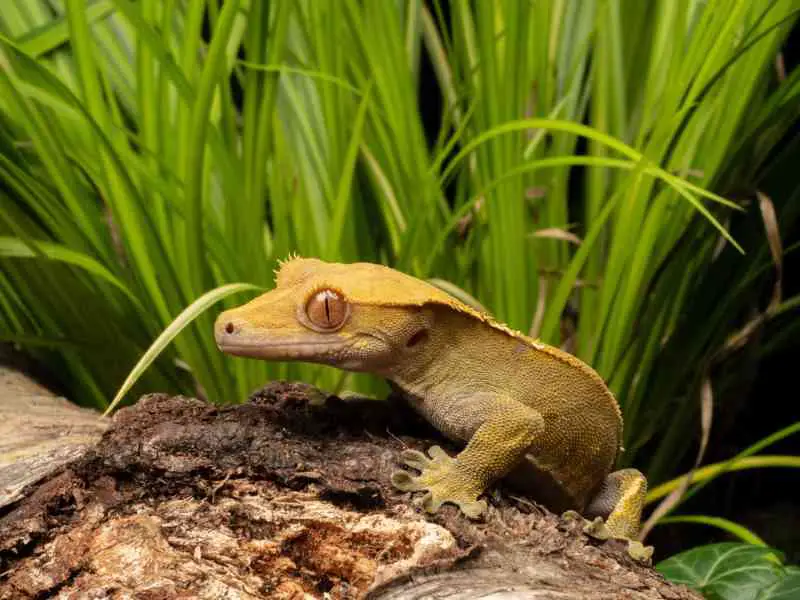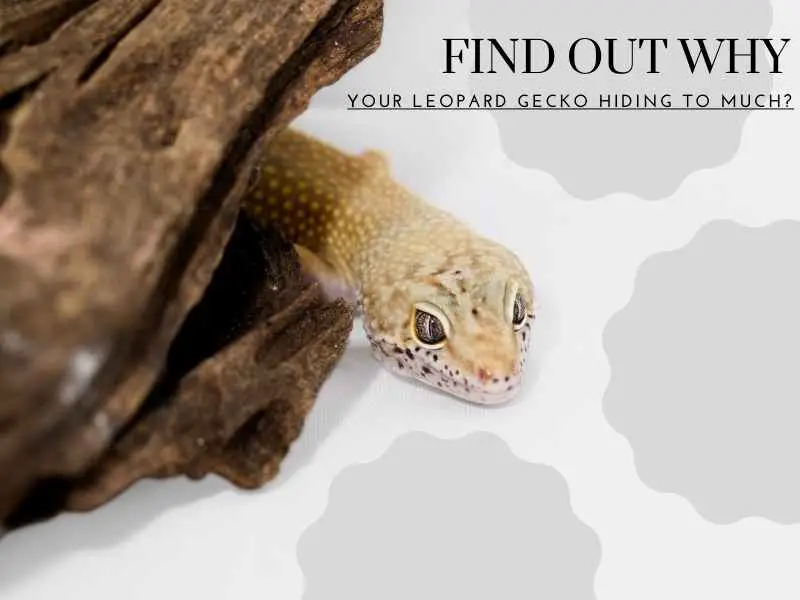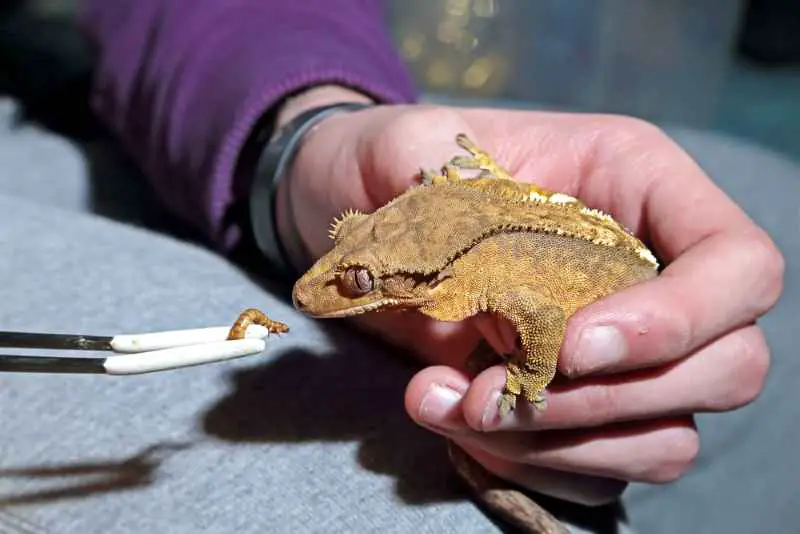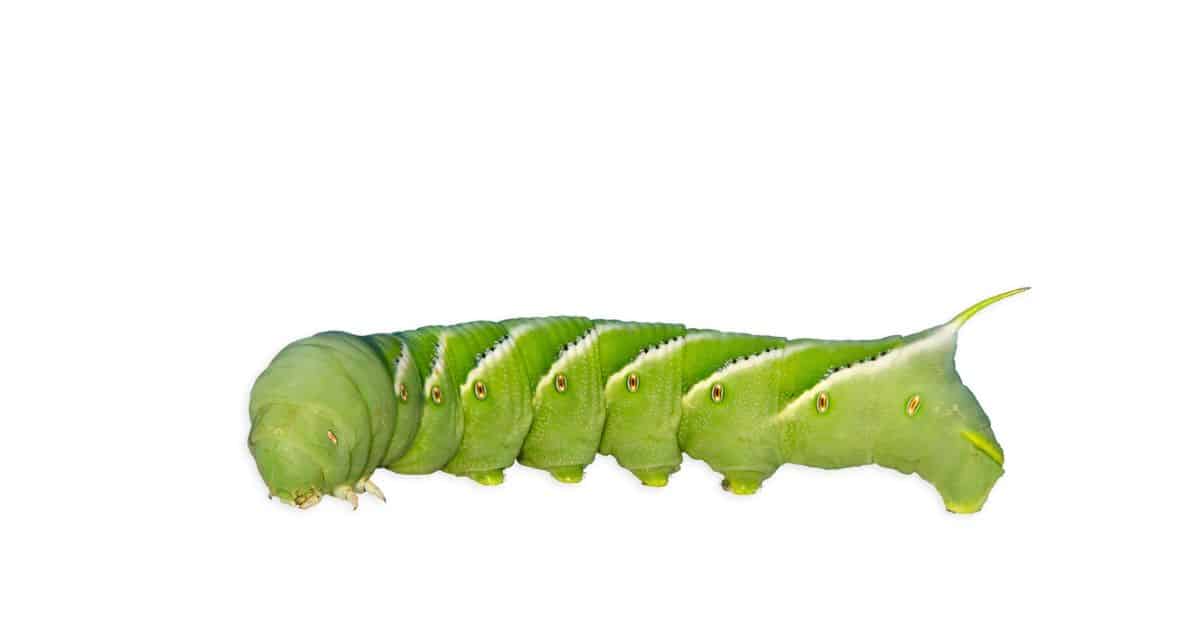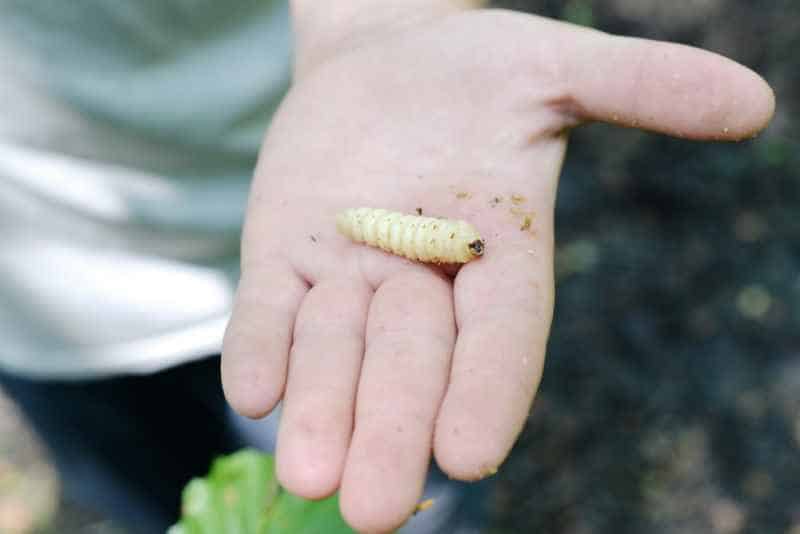How To Set Up An African Fat-Tailed Gecko Tank (Guide)
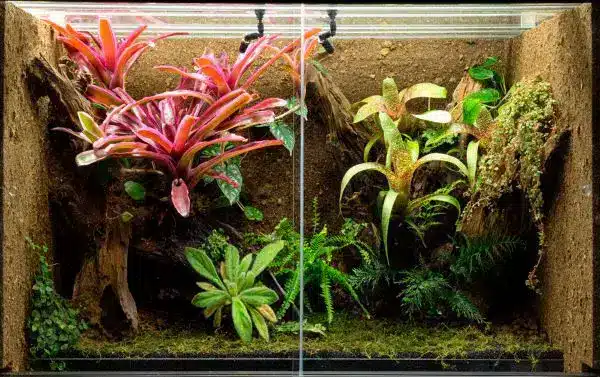
The African fat-tailed geckos are rising in popularity. The West African reptile is calm and docile, thus easy to handle. Their care is pretty low-maintenance, too, making them an ideal beginner reptile pet. However, it is crucial to start on the right tail, so to speak, and make sure the setup is correct.
So what does a fat-tailed gecko need for its tank setup?
Contents
African Fat-Tailed Tank Setup
The African fat-tailed gecko lives between 10-25 years in captivity, averaging 15 years. Thus, it needs a nice tank as it will be living with you for a while. However, that doesn’t mean your setup needs to be complicated. Simple can often be best. For your pet, it is about meeting its needs, not the aesthetic. (Although you might care about the aesthetic.)
What Size Tank Does An African Fat-Tailed Gecko Need?
A 10-gallon wooden vivarium with a screen or glass front is the minimum size for up to two African fat-tailed geckos. However, a bigger vivarium would be best, up to 20 gallons. This will make it easier for your pet(s) to regulate their heat, have plenty of hiding spaces, and spreads out the waste. It also leaves plenty of room for food and water dishes.
The reason a wooden vivarium is preferred over a glass tank is due to the insulation it provides. In addition, they need to maintain a warm environment, which is easier to regulate in a wooden vivarium. You might also find it less expensive in the long term due to the temperature requirements for a fat-tail.
If you are handy with DIY, you might want to try building one. Hardwood species generally do best, such as dogwood, oak, and ash. Cedar and eucalyptus are best avoided for reptiles.
Be aware that melamine materials do not hold up well with the tank environment an African fat-tailed requires. The melamine is likely to peel and rot.
This does not mean you can’t keep an African Fat-Tailed Gecko in a glass tank. You can, and there are some lovely ones out there to consider. One advantage is that you have a better view of your pet. However, these are not fish tanks. The gecko needs sliding doors, air vents, and, preferably, a screened area. Air circulation is vital for your pet’s happiness.
The other advantage to a glass tank is you don’t have to worry about the wood warping or, even worse, rotting. The tank environment can be too much for some types of wood, making glass a safe bet.
Lastly, some people find glass tanks easier to clean, and you don’t have to worry about the glass retaining odor.
Decorations for African Fat-Tailed Gecko Tank
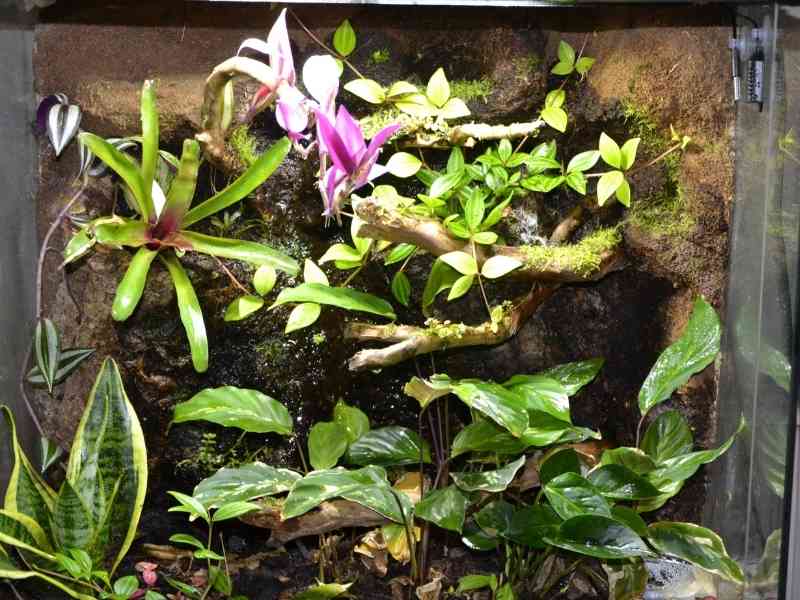
Once you have your 10-20-gallon tank or vivarium selected, it is best to choose the decorations. This is because they are easier to add before you install lamps and substrates.
African fat-tail geckos do not have sticky pads on their feet, so they will not be climbing up any glass on the tank. Their native habitat was savannas and rocky woodlands, so they like clambering over items and hiding in burrows. Branches, bark, cork rounds, caves, and bamboo hollows are all great options. However, many find grapes a good choice when it comes to wood for your gecko to clamber over.
They will need a burrow or cave on the hot side of the tank as well as on the cooler side. Rocks, however, are not generally recommended. This is because fat-tailed geckos tend to burrow, and you don’t want anything too heavy to either roll over onto your pet or for your pet to get stuck underneath.
Plants also give them amusement and places to hide. In addition, many people use fake plants, which are easy to maintain, and can be cleaned if required.
If you want live plants, they need to be drought-tolerant, hardy, and not fussy about having root disturbances. Delicate plants will probably become flattened and battered. Some plants to consider are creeping fig, calanthe, pothos, sansevieria, and peperomia. Sphagnum moss in hiding places can help keep caves and hiding places warm and humid.
Decorations To Avoid for African Fat-Tailed Gecko
As we mentioned, you don’t want heavy rocks in your pet’s tank due to their love of burrowing. They could destabilize the rock or get stuck.
Also, remember they do not have the climbing skills of some other reptiles. Thus, those attachable ledges higher up are not recommended. If you use one, keep it lower down. Nor will they require rope to scamper across in the air. They can hurt themselves if they fall from a height.
The food and water bowls should also be shallow. This is because they are not water lovers, and you want it to be easy for them to get out should they do something clumsy. The water, however, will both give them something to drink and help maintain humidity in the tank.
Do African Fat-Tailed Geckos Need A Heat Lamp?
African fat-tailed geckos required a hot side and a cool side to their tank. Basking lights and possibly an under-tank heater will help you maintain the 90-95 F (32-35) required for your hot side daytime temp (10-12 hours). Some find a single incandescent spot lamp enough to achieve this. At night this can drop to 86F (30C), and the basking light should be off.
Other lamp suggestions include a T8 or T5. These can be mounted to the back of the ceiling. Some find a halogen flood heat bulb makes a good basking light. If your tank is significant, you may need a few. Another recommendation is the Exo Terra Reptile Glow Light. However, you need to monitor them and consider a dimmer to avoid overheating the area.
Your cool side of the tank should be between 70-84 F ( 1-28C) during the day and under 70-78 F (21-25) at night. It is essential that they have a cool side to help regulate their temperature. In addition, by moving between the various areas of the tank, they can keep their bodies comfortable. Not being able to thermoregulate is harmful to the African fat-tailed gecko.
Once you’ve figured out what works best for your tank, consider using a timer. This will make maintenance much more manageable.
Never use a warming rock in your tank. The fat-tailed gecko has a poor sense of temperature on its belly and could burn itself before it realizes there is a problem. This leads to expensive vet bills and a harmed pet. Lower-powered heat mats are a much better option to provide constant and safe belly heat.
What Lighting Do African Fat-Tailed Geckos Need?
The African fat-tailed are nocturnal, so you will not need the same sophisticated lighting system as some other reptiles require. However, some find a combination of a basking light and red light to be sufficient, and these contribute to regulating the heat.
UVB is not a must with fat-tailed geckos. Some owners deem them completely unnecessary and keep very happy pets. However, others feel that they have thrived better and hold weight on easier with a 5.0 UVB light that runs the length of their enclosure. So perhaps hold off on the UVB and see how your pet does without it.
Do African Fat-Tailed Geckos Need High Humidity?
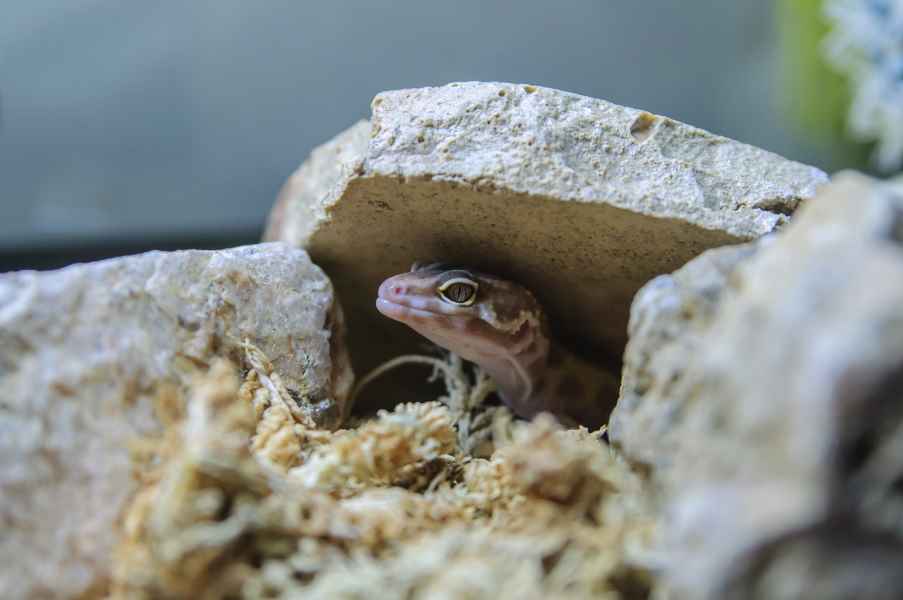
An African fat-tailed gecko can thrive at 40-60% humidity. Therefore, placing moss in a cave that can retain warmth and a bit more humidity is advised. You will also need to provide a dish of clean water each day. Another trick is adding damp paper towels into the tank to raise the humidity.
They do need extra humidity when shedding. Again, damp paper towels or moss are an easy way to raise the humidity. Another is gently spraying a fine mist into the tank once a day or so when needed.
There are owners who want to give their African fat-tailed gecko an environment that mimics what they would have in the wild. The region they come from has a wet and dry season. Thus, from April to October, they would be in a climate of 70-80% humidity. The dry season is from November to March, and this consists of around 50% humidity.
What Temperature Does A Fat-Tailed Gecko Tank Need To Be?
Those that do the seasonal humidity keep one of its caves at 85-100% for their pet throughout the year. This is located on the cool side of the tank. Again, moss and a spray bottle can help keep the small humid area to the correct percentages.
Proponents of the wet/dry seasons for their tank’s environment believe this will contribute to the better long-term health of their fat-tail.
What To Do If Your Gecko Is Struggling With Shedding?
Ideally, if your African fat-tail gecko is struggling with shedding, it is a sign it needs higher humidity in the tank. While that’s good to fix (do fix it), sometimes you want to help your pet faster than the tank’s environment can be adjusted.
Thus, if your gecko is struggling to shed or has retained some skin, you can try to assist by giving them a little soak. Of course, this shouldn’t be done daily, as they do not enjoy it. But on occasion, it might help, especially if the tank’s humidity is not proving to meet its shedding needs.
All you need to do is find a shallow tub not much bigger than your pet. Fill it on a quarter of the way, enough that your gecko’s feet are submerged. You will also need to ensure the water is between 50-70 F (10 – 21.) Once set up, place your gecko into the tub, so the water covers the feet and allow a 5-minute soak.
Learn more about your African fat-tailed gecko shedding
What Is The Best African Fat-Tailed Gecko Substrate?
The best substrate for African fat-tailed geckos is a newspaper and paper towels.
This makes it easy to clean. Butcher and packing paper are also good alternatives. Orchid bark, coconut bedding, and Zoo Med Forest Floor Cypress Mulch are things to try if you do not like the aesthetic of paper. Reptile Carpet looks slightly natural and is reusable after cleaning.
Keep in mind that crickets will try to burrow into the substrate. So stuff like wood chips and soil could lead to cricket eggs, which is not ideal. On the other hand, the paper needs a complete change every 2-3 days where substances such as orchid bark or coconut bedding are only required once a week.
Some will use soil and even mix up to 20% sand into it. However, do this with caution. Also, it must never be sanded on its own. This will harm your pet’s digestive tract. This includes calcium sand, as it simply doesn’t work with a fat-tail’s digestive system.
Lastly, should you use soil, ensure it is free of pesticides and fertilizer. Some people find it comforting just to buy organic potting soil, which is free of perlite. They feel this is similar to coconut coir or expandable bricks but works out to be cheaper in the long run.
The advantages of soil are that it will help retain the humidity in the tank. Also, some people like it better, as it gives the tank a natural aesthetic. But since your gecko enjoys humidity, you will not require a drain layer.
Conclusion
African fat-tailed geckos are one of the easier reptile pets to home and maintain. Just be sure the tank is roomy enough, with plenty of circulation and areas of different temperatures. Other details, like fake plants vs. real ones, are not as crucial so long as everything is safe for your pet.
I wish you the very best as you set up a new home for your small friend.
